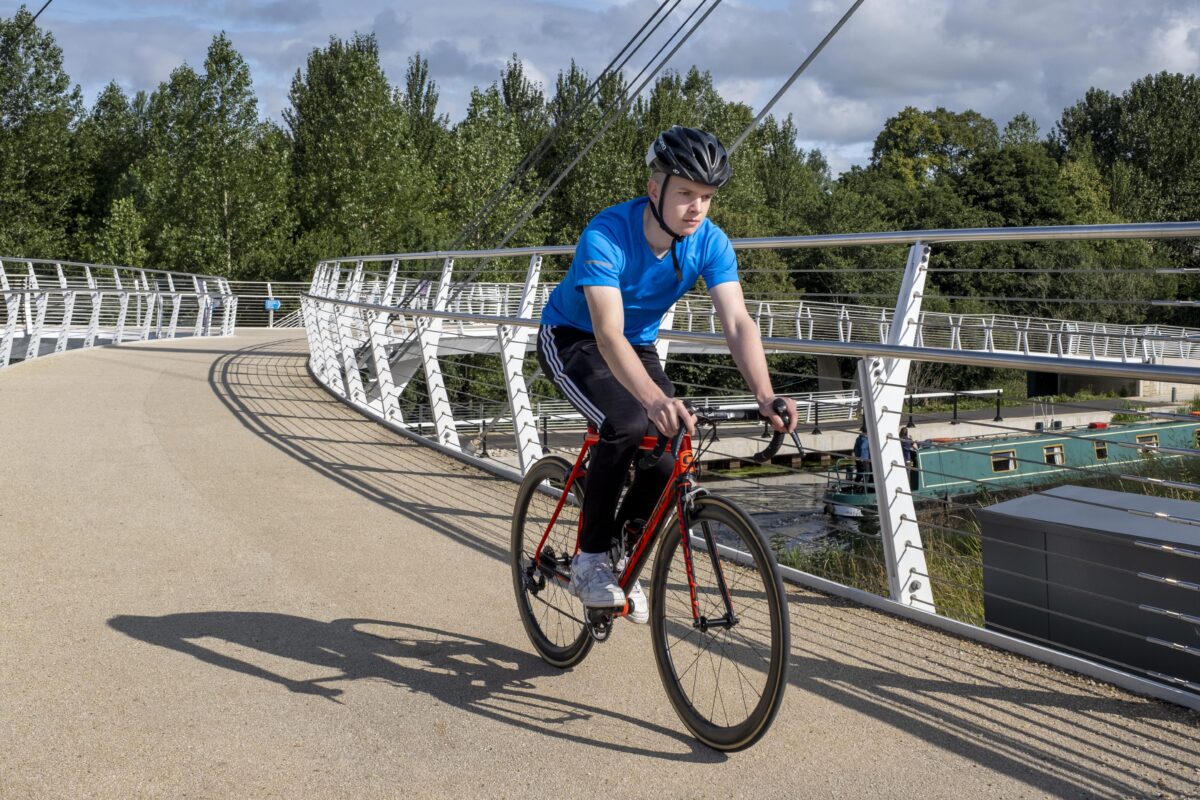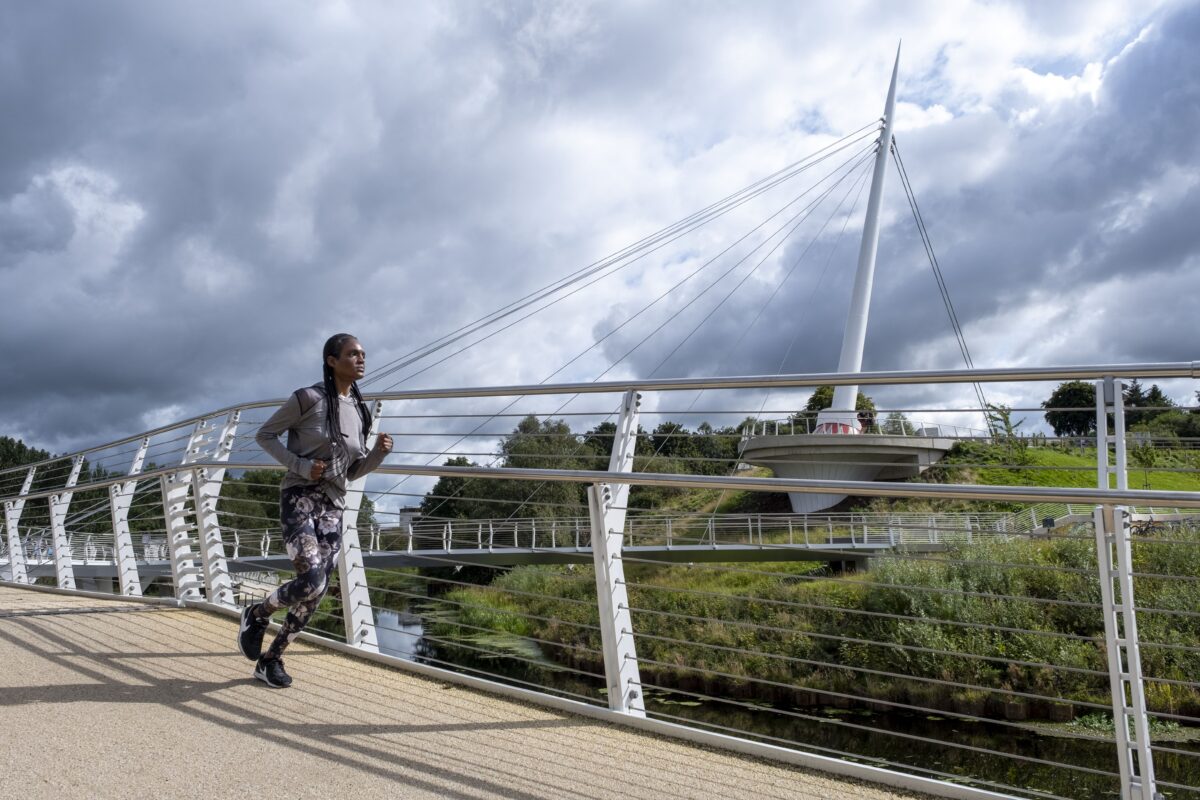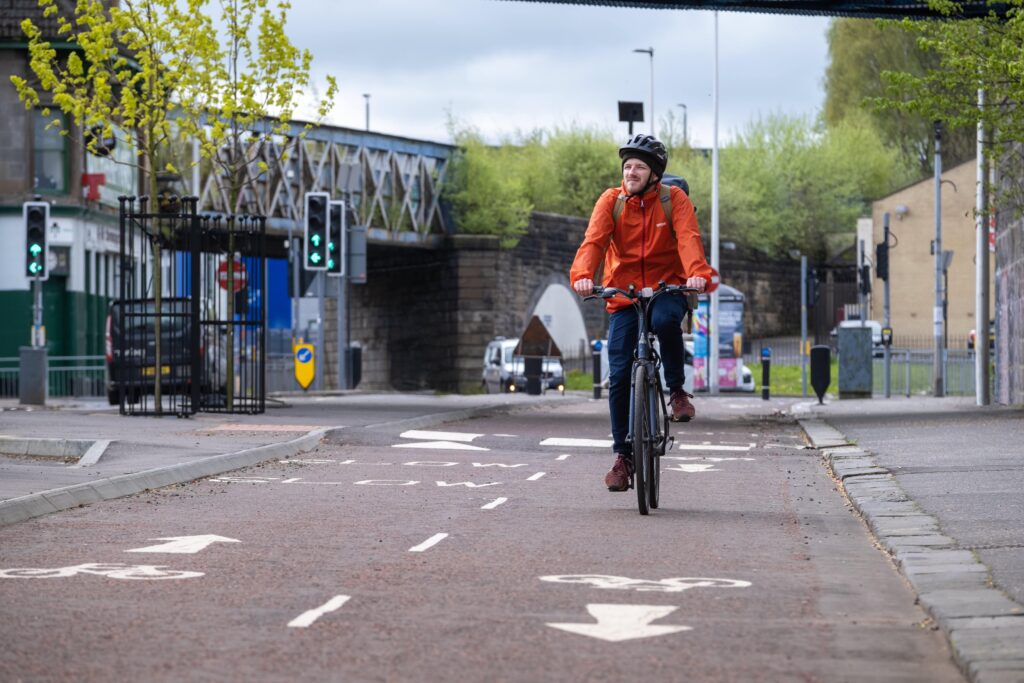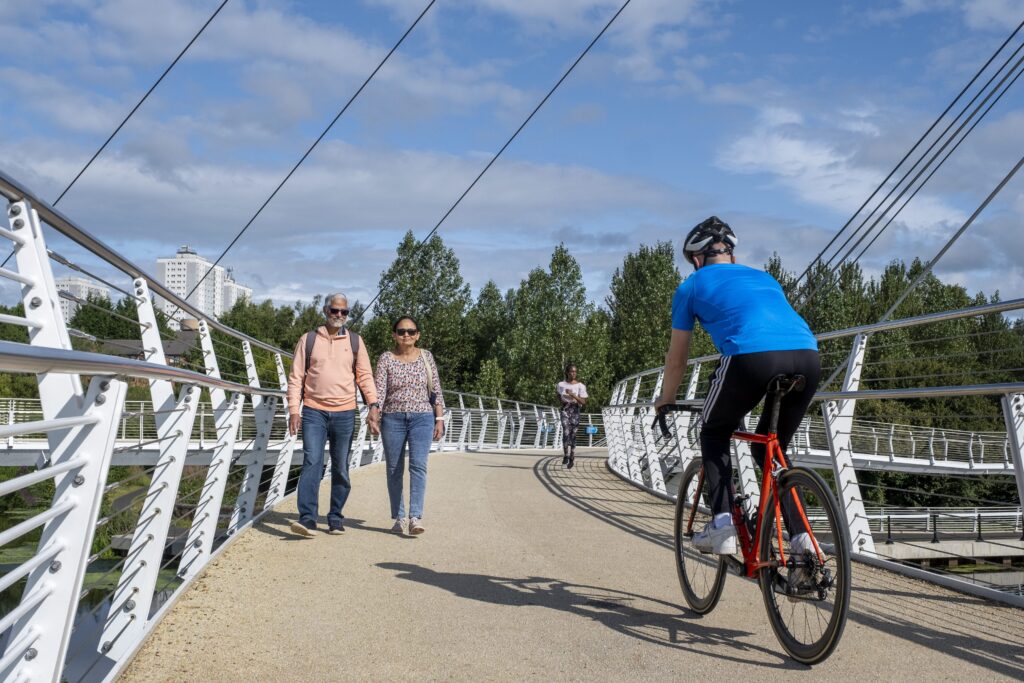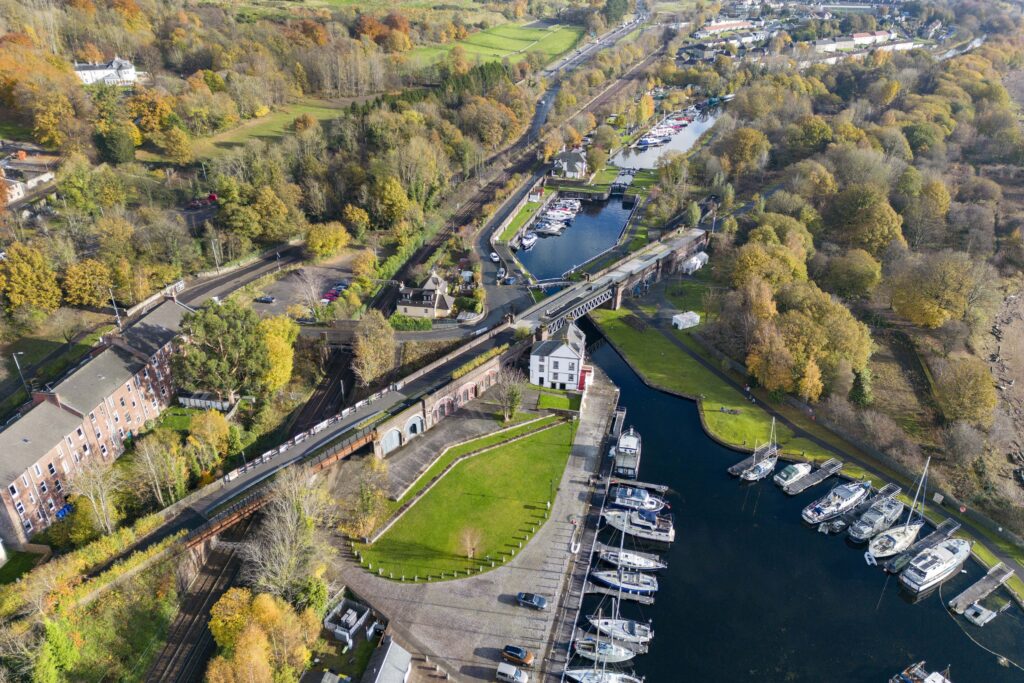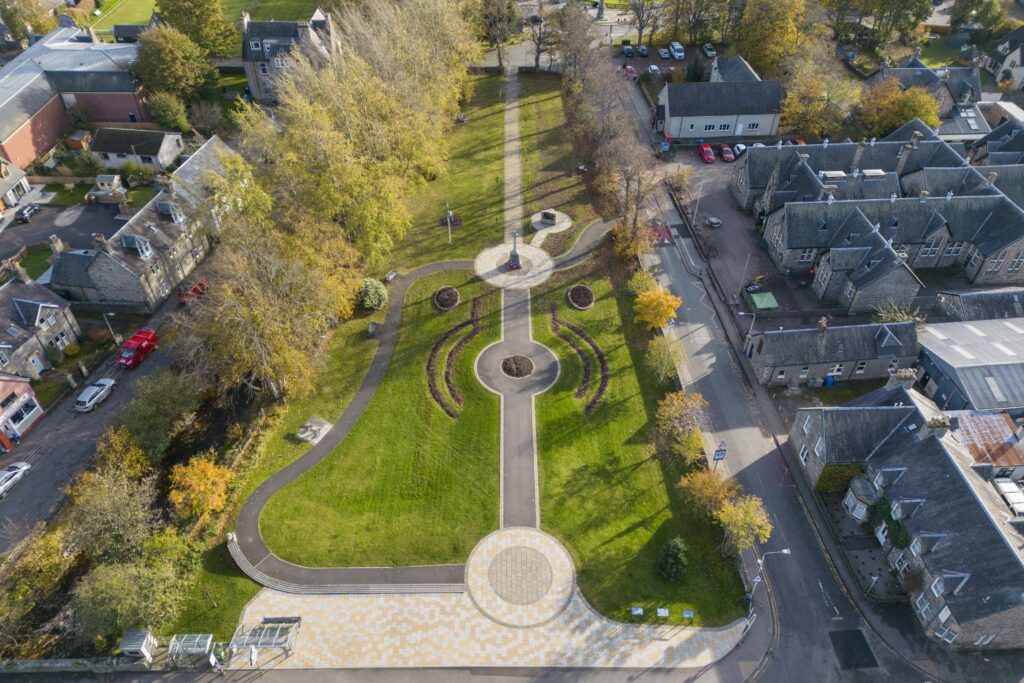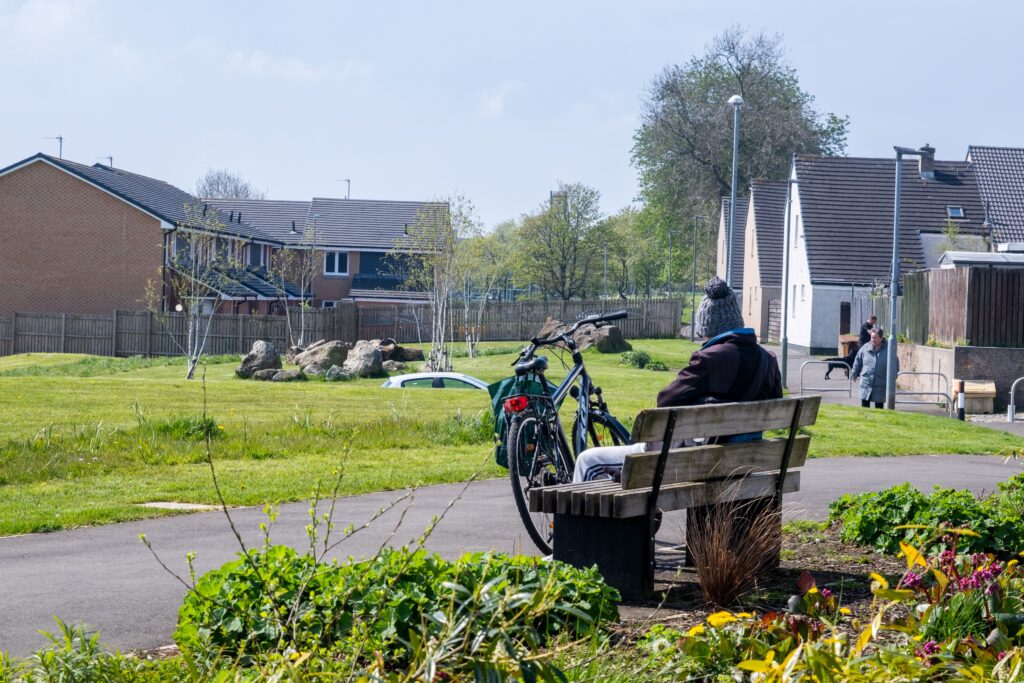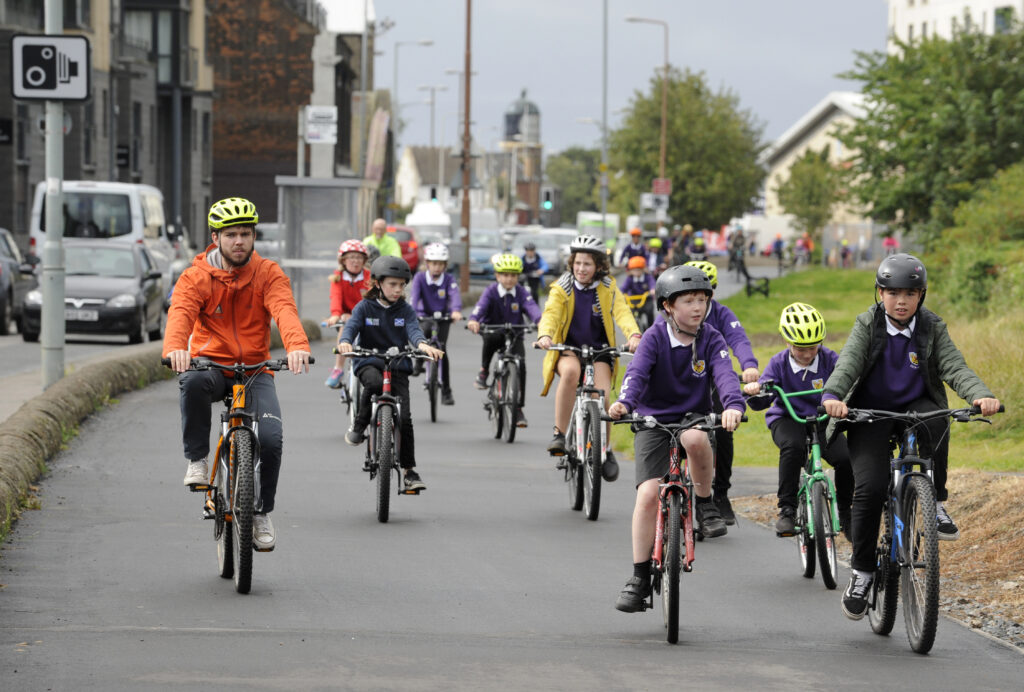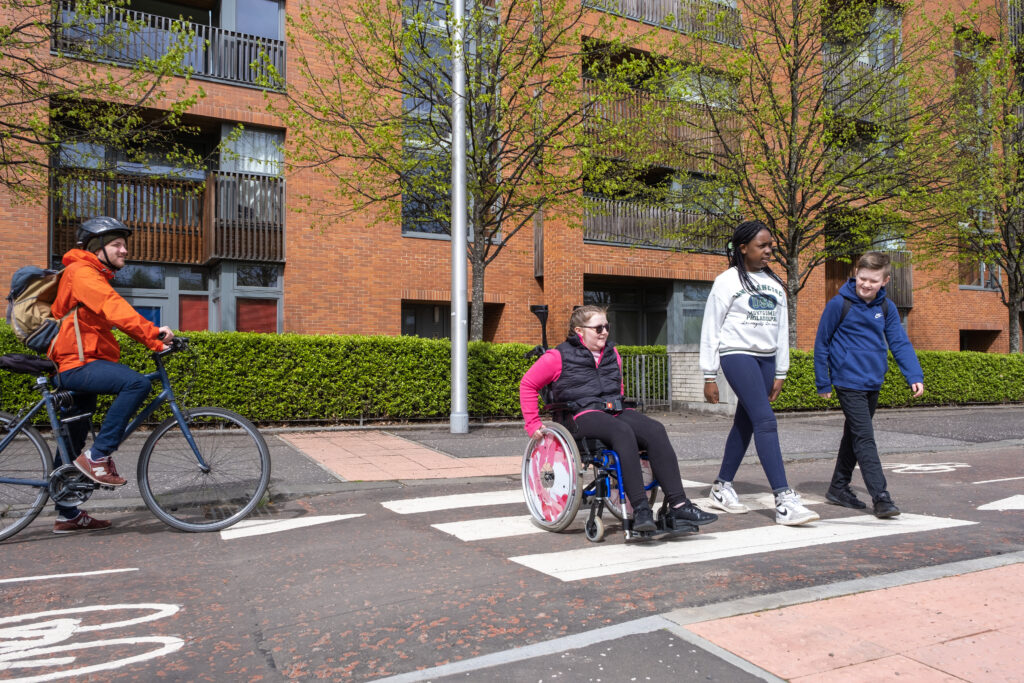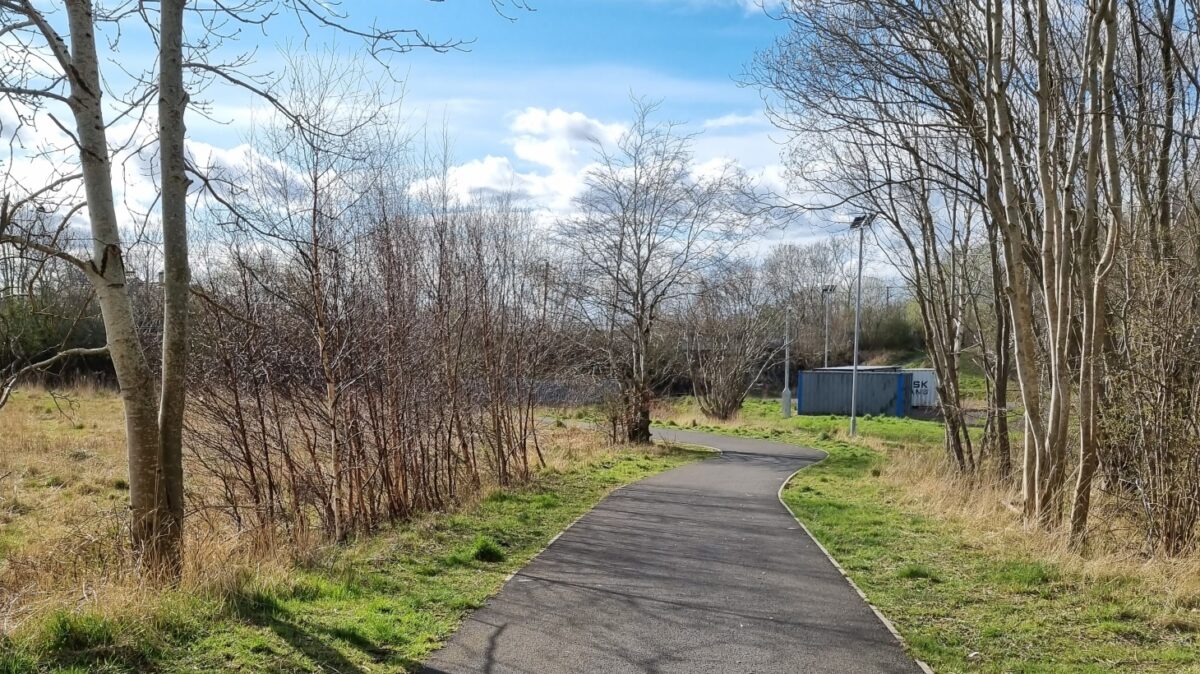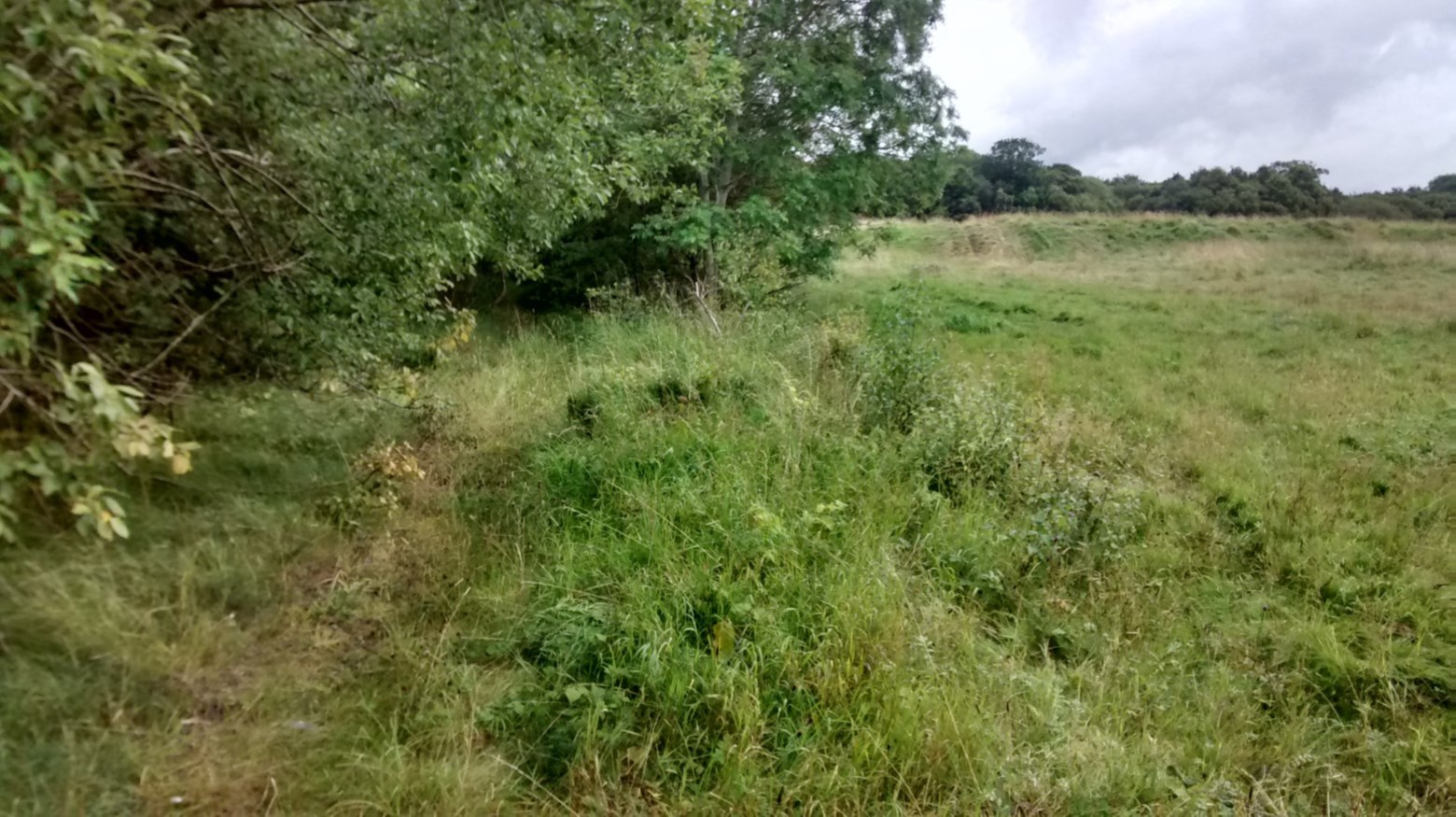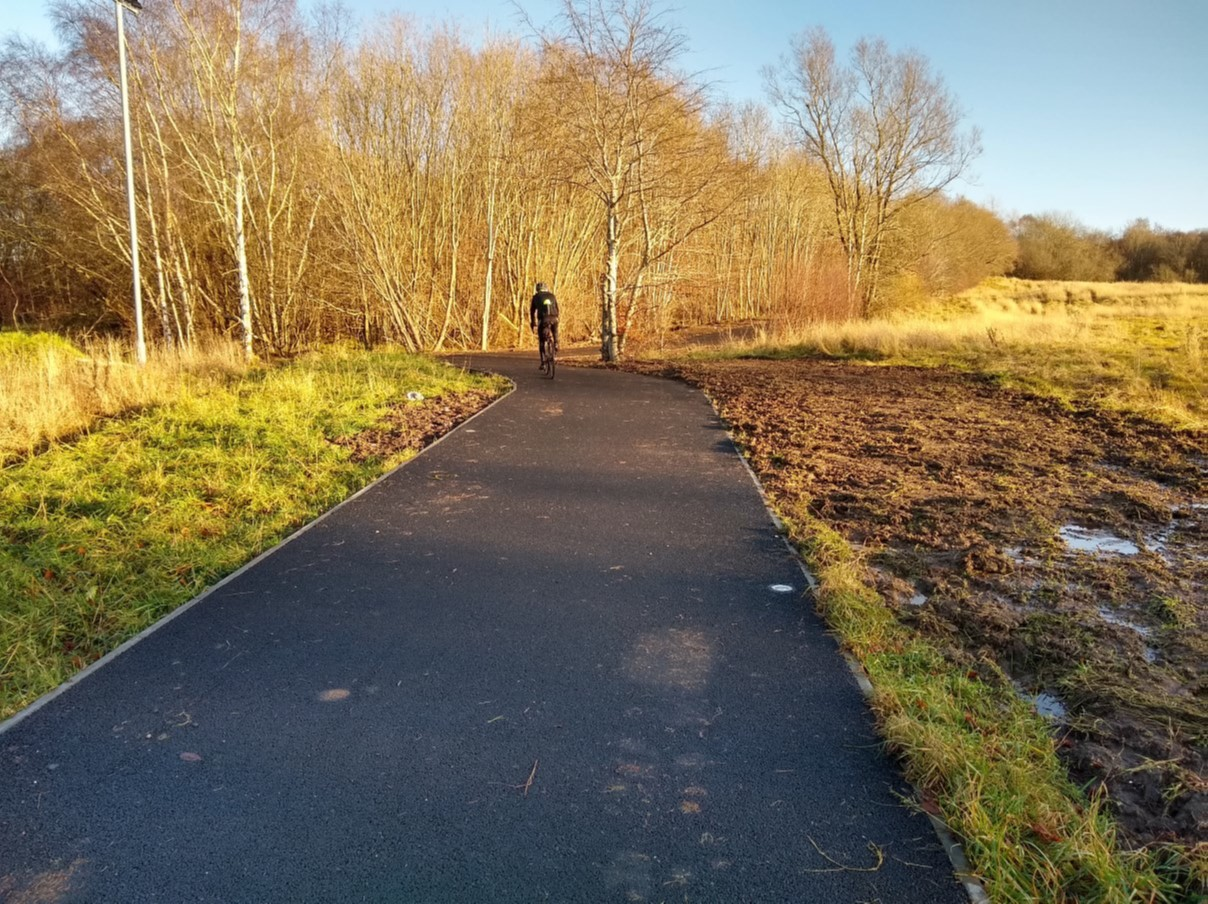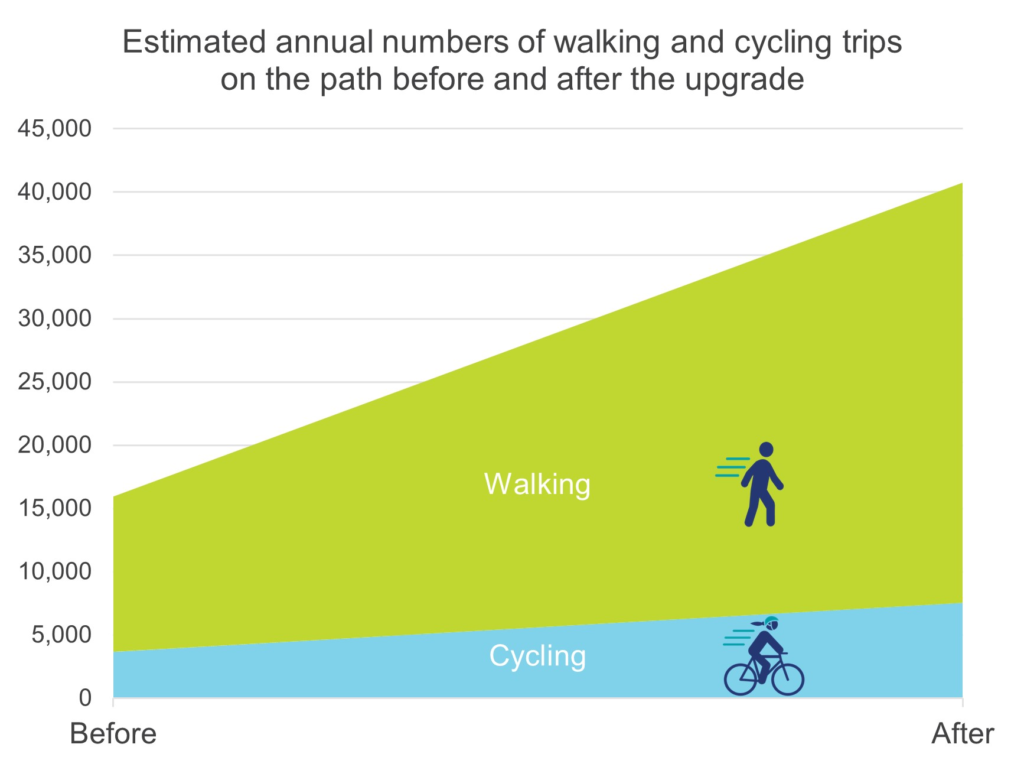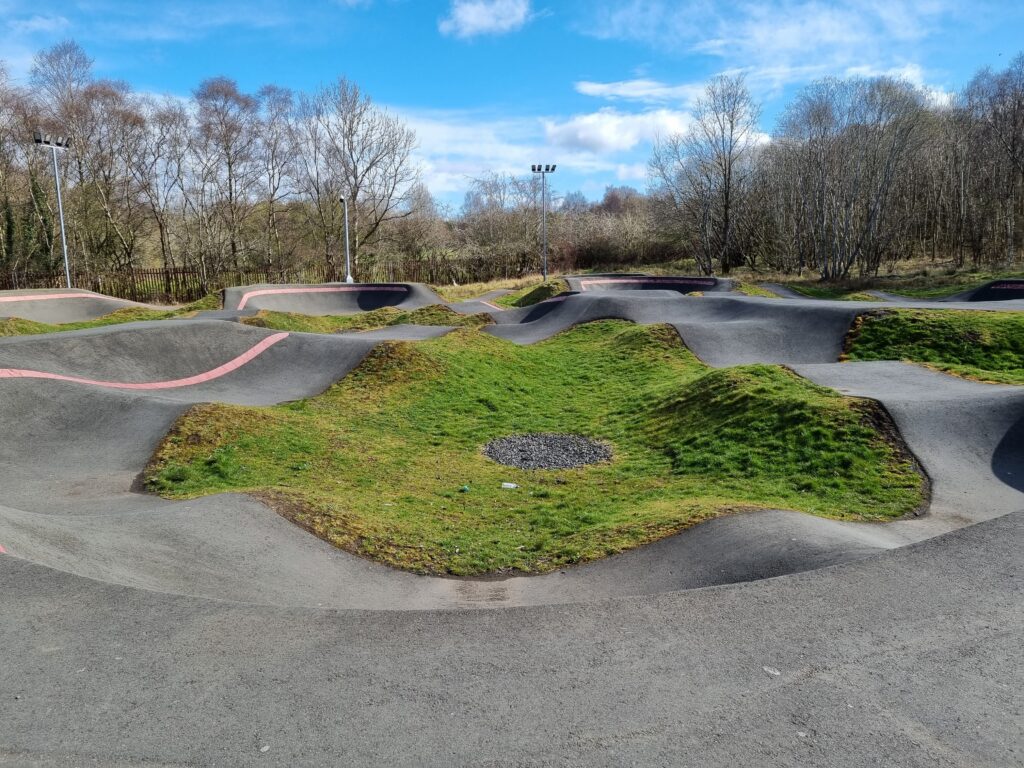According to data collected and analysed by Sustrans, around 240,000 active journeys are predicted to have been made via Stockingfield Bridge in 2023.
Of these, around half were completed by bike, with joggers and walkers making up a large part of the remainder.
Delivered by Scottish Canals in partnership with Sustrans, Stockingfield Bridge provides a key active travel connection between the communities of Ruchill, Gilshochill and Maryhill.
Featuring stunning artworks and landscaping improvements, the new bridge also serves as the missing link in the Forth and Clyde Canal and National Cycle Network.
A total of £13.7 million was awarded to the project via Sustrans through Places for Everyone, an active travel infrastructure fund backed by the Scottish Government.
Accessible attraction
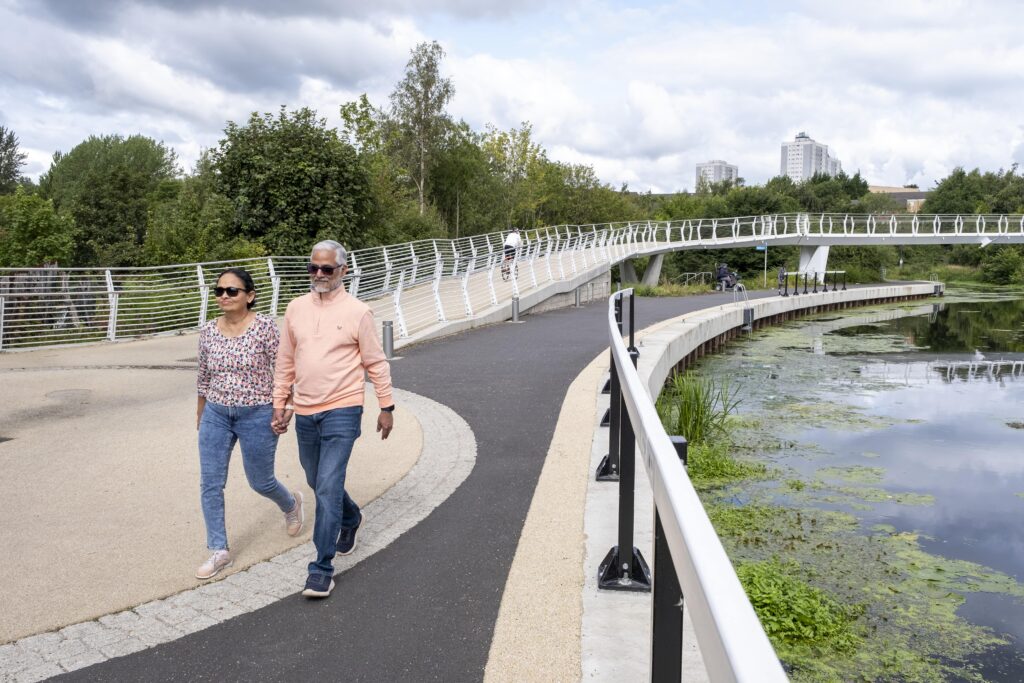
Researchers also asked people about their experiences of using Stockingfield Bridge. Most of those surveyed agreed that the route is well signposted, is of high quality and allows them to cross busy roads safely. As well as this, 82% of users agreed the route is accessible for people of all ages and abilities.
Prior to completion of the bridge, access to the canal towpath and travel between the communities was limited to a narrow poorly lit underpass. Heavy traffic and a repeated instances of flooding also raised safety concerns.
Karen McGregor, Scotland Director for Sustrans, said:
“It’s truly extraordinary to see how people living and working across Glasgow have embraced Stockingfield Bridge over the last two years. Not only is the route proving to be indispensable in increasing the number walking, wheeling and cycling journeys to and from the city centre, it’s also reconnecting neighbouring communities and keeping people safe from traffic every day.”
“The route is also transformational in terms of accessibility, meaning everyone regardless of ability can access the canal towpath and travel onwards via the National Cycle Network. I really look forward to seeing Stockingfield Bridge continue to grow in popularity and firmly embed itself as an iconic Glasgow landmark.”
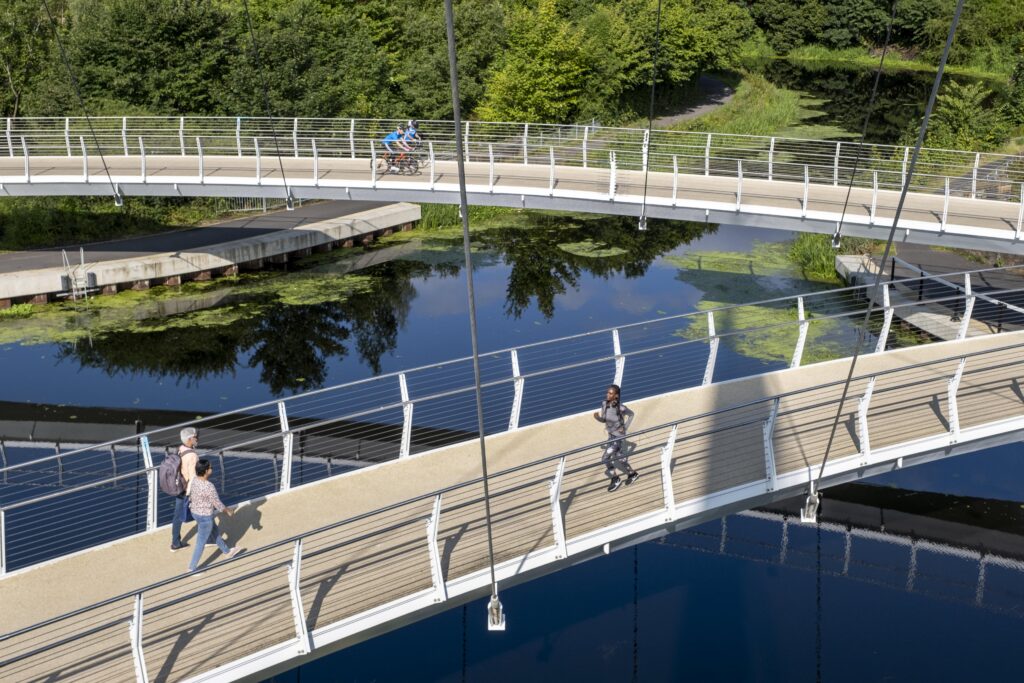
John Paterson, Scottish Canals’ Chief Executive Officer, said:
“Stockingfield Bridge has not only re-connected the people of north Glasgow who did not have easy access across the canal since the canal was built in the late 1700s, but has become an active travel route for thousands across Scotland.”
“We are committed to ensuring that our canals and towpaths are accessible for all and provide a traffic free attractive environment to enjoy, and Stockingfield Bridge is impressive example of this. We are delighted to hear that so many people have benefited from this investment and look forward to welcoming many more in the future.”
The report and its findings can be accessed here.
